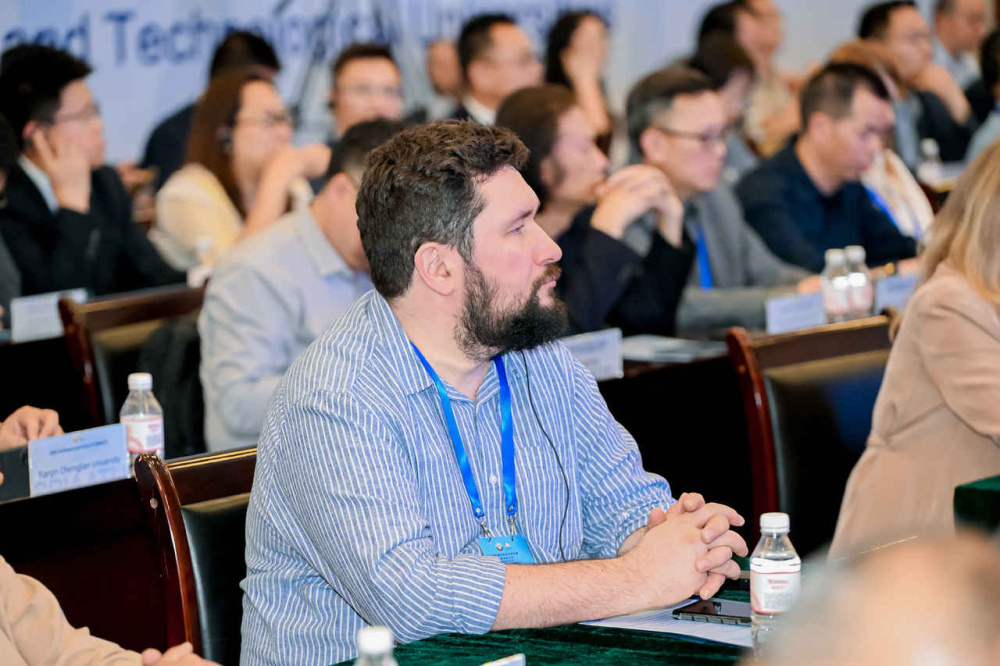 Andrey Surovenkov at the conference
Andrey Surovenkov at the conference
Head of the SPbGASU Department of Architectural Design, Associate Professor Andrey Surovenkov spoke at the forum of the Silk Road International Alliance of Architectural and Technological Universities (SRIAATU) at Xian University of Architecture and Technology (China). As reported by the Head of the SPbGASU International Relations Division Shuainat Akhmadulaeva, our is a partner of this institution and a member of the alliance, which opens up new opportunities for interaction in the field of education and science.
"The annual international conference attracts employees of universities from many countries with its relevant agenda: the topics raised are understandable and close to all participants. Our university is interested in exchanging experience and discussing important aspects, so it is participating in the conference for the second year in a row," explained Shuainat Akhmadulaeva.
This year, the conference "Joint Construction and Innovation along the Silk Road: Writing a New Chapter in Green Architecture of the Silk Road" discussed priority areas of cooperation between universities of the Silk Road countries in the field of construction science and technology, integration and development of educational innovations. In his speech, Andrey Surovenkov considered the advantages and risks of using artificial intelligence in the development of course projects in the discipline "Architectural Design".
“The architectural desidn is increasingly using new tools, greatly accelerating and simplifying the work of an architect. But they come to education much later - only after they have become firmly established in business. For example, the computer-aided design system (CAD) came to the university only in the 2002/2003 academic year, when it was already fully used in real design. On the one hand, this is logical, since students begin to use only those design tools that have received recognition from business and have been tested in practice. On the other hand, without an understanding of how to work with new tools needed by a modern specialist, competencies are not fully acquired. At the same time, students are quite actively mastering new technologies and are already beginning to use AI when creating course projects. It is difficult to prohibit this, and it is also unnecessary. Therefore, it is better to identify possible areas of application of AI in course engineering and the boundaries within which this technology can be used in a dialogue with students, so as not to harm the acquisition of other important competencies. At the same time, it is already important for teachers to understand the principles of neural networks: what they are most often used for, and how it is possible to distinguish a picture drawn by a neural network from a picture made by a specialist,” explained Andrey Surovenkov.
Andrey Viktorovich prepared his presentation with a team of students and identified a fairly large number of neural networks that are already successfully used in developing ideas and refining three-dimensional images. Seven neural networks were selected that were tested by students during design or received positive feedback in professional communities. The main options for using these neural networks in developing course projects were also identified: editing and improving three-dimensional images, selecting materials, searching for possible ideas during design.
"This technology can facilitate and speed up the design process. Especially since it is developing very quickly. Currently, the neural network "operator" has to form the correct request to get a more or less suitable solution, but in two or three years, neural networks will learn to fully communicate with a person, understanding what he wants to get. However, as futurologists wrote, AI will free people from routine, giving them time for creativity. It seems that it is the creativity of the neural network that they are trying to take away from us. Therefore, the main danger for students is to become not a full-fledged specialist, but simply an operator of the neural network. To prevent this from happening, it is important to learn to design independently," Andrey Surovenkov summed up.
It should be noted that Andrey Surovenkov is participating in this conference for the second time. The topics he raises find a wide response from colleagues from different countries.